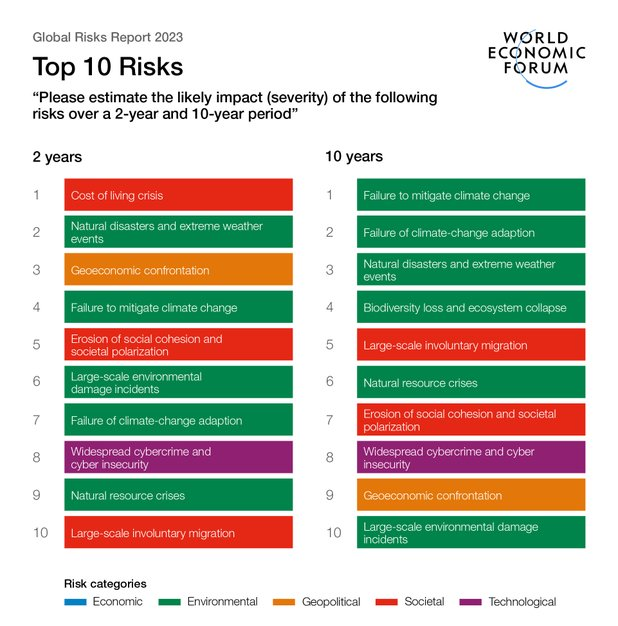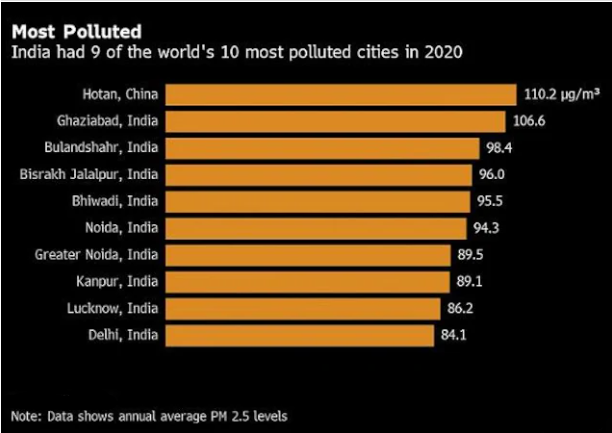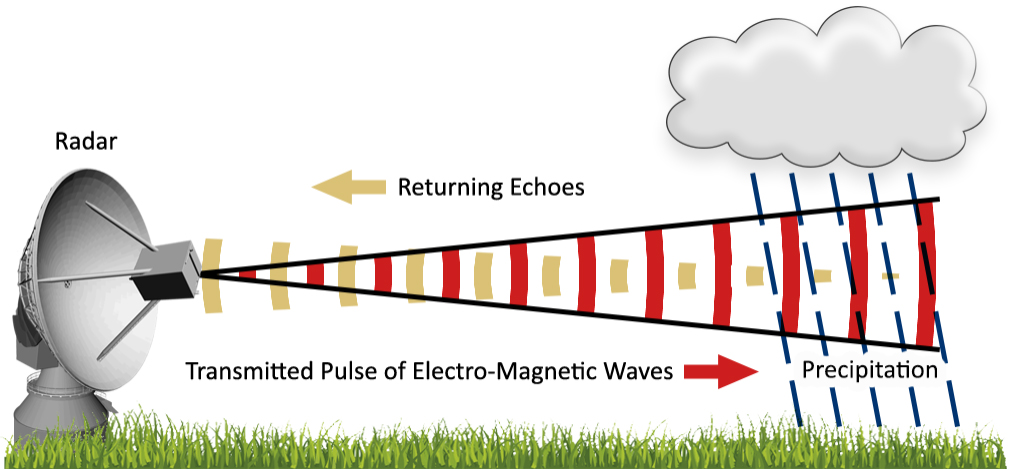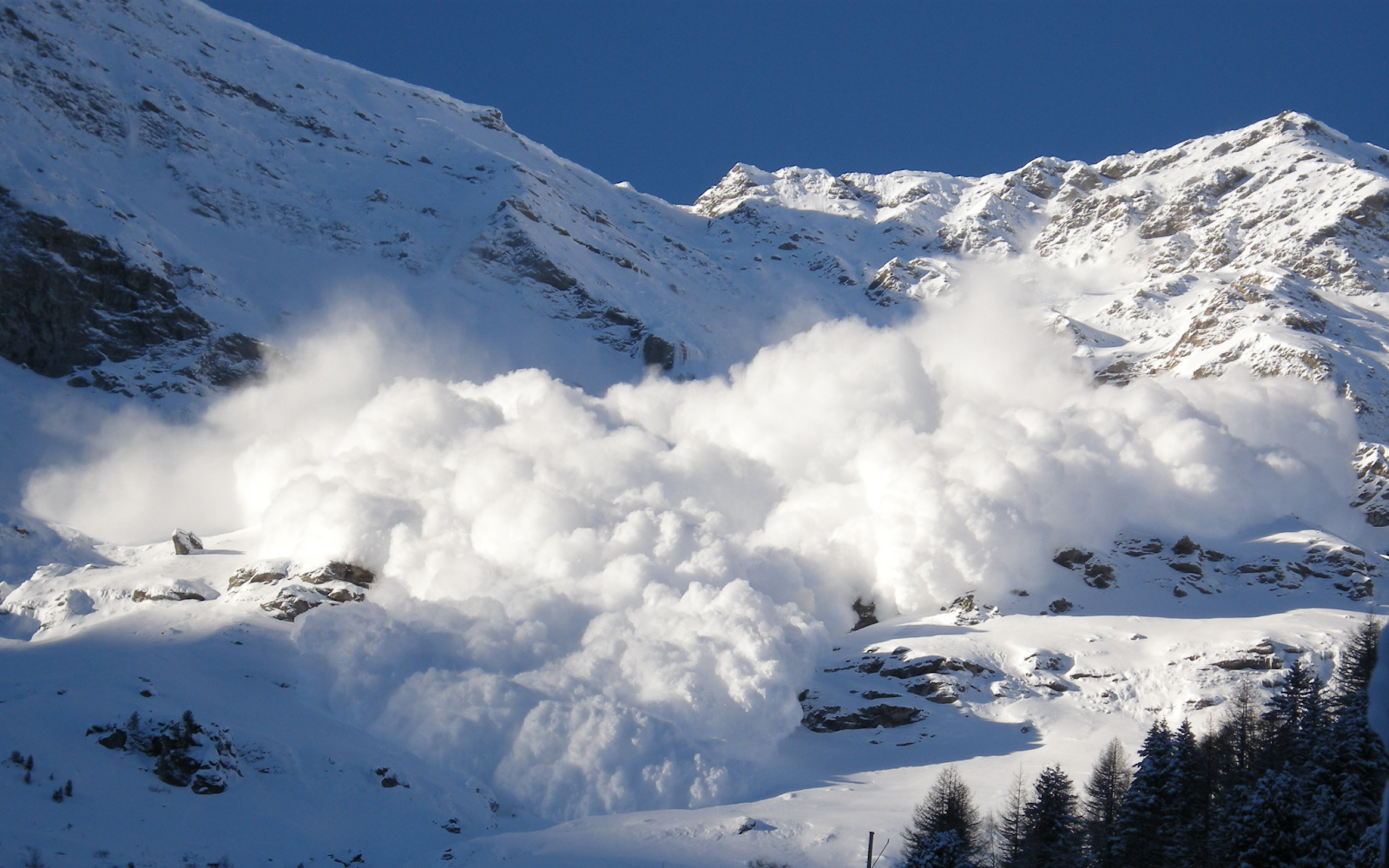Maps
Indian Polity
Centre Vs Delhi Govt on Control Over Services
For Prelims: 69th amendment to the Constitution of India, Article 239AA of the Constitution, collective responsibility
For Mains: New Delhi Government vs Union Government, Government of NCT of Delhi (Amendment) Act, 2021, Co-operative Federalism, Constitutional Amendments
Why in News?
A five-judge Constitution Bench of the Supreme Court (SC) is hearing a dispute between the Delhi government and the Centre over the control of administrative services.
- Almost five years ago, another Constitution Bench had ruled in favour of the State government in a similar tussle.
What is the Timeline of the Dispute?
- 2017 Judgement:
- The Delhi High Court had, in its judgment 2017 held that for administration purposes of the National Capital Territory (NCT), the Lieutenant Governor (L-G) is not bound by the aid and advice of the Council of Ministers in every matter.
- On appeal, the SC in 2017, referred the matter to decide the interpretation of Article 239AA of the Constitution.
- 2018 Judgement:
- A five-judge Constitution bench had unanimously held that the L-G of Delhi is bound by the aid and advice of the elected government, and both needed to work harmoniously with each other.
- 2019 Judgement:
- A two-judge Bench of the SC delivered a split verdict on the question of powers of the Government of NCT of Delhi and Union government over services and referred the matter to a three-judge Bench.
- While one judge had ruled the Delhi government has no power at all over administrative services.
- Another judge, however, had said the transfer or posting of officers in top echelons of the bureaucracy (joint director and above) can only be done by the Central government and the view of the L-G would prevail in case of a difference of opinion for matters relating to other bureaucrats.
- A two-judge Bench of the SC delivered a split verdict on the question of powers of the Government of NCT of Delhi and Union government over services and referred the matter to a three-judge Bench.
- 2022 Case:
- The Centre on 27th April 2022 sought a reference to a larger Bench, arguing that it needed the power to make transfers and postings of officers in Delhi on account of it being the national capital and the “face of nation”.
- The court agreed that the limited question relating to the scope of the legislative and executive powers of the Centre and NCT of Delhi, with respect to the term “services”, would need an authoritative pronouncement by a Constitution Bench in terms of Article 145(3) of the Constitution.
What are the Arguments and Counterarguments in the Issue?
- Arguments For:
- The Centre has consistently maintained that because Delhi is the national capital and the face of the country, it must have control over administrative services, which include appointments and transfers.
- Counter-Arguments:
- The Delhi government has argued that in the interest of federalism, the elected representatives must have power over transfers and postings.
- The Delhi government had also contended that the recent amendments to the Government of National Capital Territory of Delhi (Amendment) Act, 2021, violate the doctrine of basic structure of the Constitution.
What is the Governance Model of New Delhi?
- The status of Delhi being a Union Territory under Schedule 1 of the Constitution but christened the ‘National Capital Territory’ under Article 239AA.
- The 69th amendment to the Constitution of India inserted Article 239AA, which declared the Union Territory of Delhi to be administered by a L-G who works on aid and advice of the elected legislative assembly.
- However, the ‘aid and advice’ clause pertains only to matters on which the elected Assembly has powers under the State and Concurrent Lists with the exception of public order, police, and land.
- Further, the Article 239AA also notes that L-G has to either act on the aid and advice of the Council of Ministers, or he is bound to implement the decision taken by the President on a reference being made by him.
- Also, Article 239AA, empowers the L-G to refer a difference of opinion on ‘any matter’ with the Council of Ministers to the President.
- Thus, this dual control between L-G and the elected government leads to a power tussle.
Way Forward
- The federal nature of the Constitution is its basic feature and cannot be altered, thus, the stakeholders wielding power intend to protect the federal feature of our Constitution.
- A diverse and large country like India requires a proper balance between the pillars of federalism, i.e., autonomy of states, national integration, centralisation, decentralisation, nationalisation, and regionalisation.
- Extreme political centralisation or chaotic political decentralisation can both lead to the weakening of Indian federalism.
- The satisfactory and lasting solution of the vexed problem is to be found not in the statute-book but in the conscience of men in power.
- With collective responsibility, aid, and advice as the pillars of democracy, it is critical to find a balance and decide whether the center or Delhi government should have control over services in Delhi.
UPSC Civil Services Examination, Previous Year Questions (PYQs)
Q. Whether the Supreme Court Judgment (July 2018) can settle the political tussle between the Lt. Governor and elected government of Delhi? Examine. (2018)
Biodiversity & Environment
Global Risks Report 2023
Prelims: World Economic Forum, Davos Summit, Climate Change, Climate Action and Biodiversity Loss.
Mains: Global Risks Report 2023.
Why in News?
Recently, the World Economic Forum (WEF) has released the 18th Edition of Global Risks Report 2023 which seeks that the world be prepared for ‘Natural disasters and extreme weather events’ in the next two years.
- The WEF report has been released ahead of its flagship Davos 2023 Meeting, which is titled as Cooperation in a Fragmented World.
What are the Findings of the Report?
- Most Severe Risks:
- ‘Failure to Mitigate Climate Change’ and ‘Failure of Climate Change Adaptation’ are the two most severe risks facing the world in the next decade, followed by ‘natural disasters and extreme weather events’ and ‘Biodiversity loss and ecosystem collapse’.
- Today, atmospheric levels of carbon dioxide, methane and nitrous oxide have all reached record highs.
- Emission trajectories make it very unlikely that global ambitions to limit warming to 1.5°C will be achieved.
- Climate Action and Biodiversity Loss:
- The world has struggled to make the required progress on climate change despite 30 years of global climate advocacy and diplomacy.
- Failure on climate action to address climate change’ has continued to figure among the top risks in the report since 2011.
- Biodiversity within and between ecosystems is already declining faster than at any other point during human history.
- But unlike other climate-related risks, ‘Biodiversity loss and ecosystem collapse’ has not been perceived to be of concern over the short term.
- It has been ranked as the 4th most severe risk in the long term or over the next ten years (by 2033).
- Reversal of Climate Mitigation Progress:
- Growing demands on public- and private-sector resources from the socio-economic short-term crises attributed to geopolitical tensions, will likely reduce the speed and scale of mitigation efforts over the next two years.
- These have, in some cases, also reversed progress on climate change mitigation, at least over the short term.
- For example, the European Union spent at least 50 billion euros on new and expanded fossil-fuel infrastructure and supplies.
- Some countries including Austria, Italy, the Netherlands and France restarted coal power stations.
- Apprehensions and Threats:
- Over the next 10 years or by 2033, the interconnections between biodiversity loss, pollution, natural resource consumption, climate change and socioeconomic drivers will make for a dangerous mix.
- In the meantime, the current global pandemic and war in Europe has been held responsible for the energy, inflation and food crises. In fact, ‘cost of living’ ranks as the top most serious global risk in the short term (over the next two years).
- Failure to mitigate climate change is also a significant global risk that the world is least prepared for.
- 70% of the respondents in the WEF report said existing measures to prevent or prepare for climate change have been “ineffective” or “highly ineffective”.
What is Global Risk?
- Global risk is defined as the possibility of the occurrence of an event or condition which, if it occurs, would negatively impact a significant proportion of global gross domestic product, population or natural resources.
- The Global Risks Report is an annual study published by the World Economic Forum ahead of the Forum’s Annual Meeting in Davos, Switzerland. Based on the work of the Global Risk Network, the report describes changes occurring in the global risks landscape from year to year.
What is the World Economic Forum?
- About:
- The WEF is a Swiss nonprofit foundation established in 1971, based in Geneva, Switzerland.
- Recognized by the Swiss authorities as the international institution for public-private cooperation.
- Mission:
- Committed to improving the state of the world by engaging business, political, academic, and other leaders of society to shape global, regional, and industry agendas.
- Founder and Executive Chairman: Klaus Schwab.
- Some major reports published by WEF are:
- Energy Transition Index.
- Global Competitiveness Report.
- Global IT Report
- WEF along with INSEAD, and Cornell University publishes this report.
- Global Gender Gap Report.
- Global Travel and Tourism Report.
UPSC Civil Services Examination, Previous Year Questions (PYQs)
Q1. Which of the following gives ‘Global Gender Gap Index’ ranking to the countries of the world? (2017)
(a) World Economic Forum
(b) UN Human Rights Council
(c) UN Women
(d) World Health Organization
Ans: (a)
Q2. Who among the following is the founder of World Economic Forum? (2009)
(a) Klaus Schwab
(b) John Kenneth Galbraith
(c) Hobert Zoellick
(d) Paul Krugman
Ans (a)
Q3. The Global Competitiveness Report is published by the (2019)
(a) International Monetary Fund
(b) United Nations Conference on Trade and Development
(c) World Economic Forum
(d) World Bank
Ans: (c)
Geography
Deep-Water Circulation
For Prelims: Deep-water Circulation, Central American Seaway, Antarctic Bottom Water (AABW), Ocean Current, Indian Ocean, Iron-manganese crusts, Authigenic Neodymium Isotope.
For Mains: Significance of Deep-Water Circulation (DWC), Deep-Water Circulations of the Indian Ocean.
Why in News?
Recent studies have indicated that tectonically driven changes in the ocean gateways had a dramatic impact on the global overturning circulations.
What do the Latest Findings Suggest?
- Studies suggest that changes in ocean routes caused by tectonics, like the closing of the Central American Seaway, had a big effect on ocean circulation.
- Central American Seaway is a body of water that once separated North America from South America,
- These changes may have led to the creation of two distinct water bodies:
- Northern component water in the North Atlantic Ocean.
- Antarctic Bottom Water (AABW) in the Southern Ocean.
- Consequently, it is also hypothesised that there would have been large-scale changes in the Deep-Water Circulation (DWC) in the oceans across the world, impacting global climate and heat exchanges.
What is Deep Water Circulation (DWC)?
- About:
- It refers to the movement of water in the deep ocean. It is driven by the density differences between water masses caused by variations in temperature and salinity.
- In the Earth's polar regions ocean water gets very cold, forming sea ice. As a consequence, the surrounding seawater gets saltier, because when sea ice forms, the salt is left behind.
- As the seawater gets saltier, its density increases, and it starts to sink. Surface water is pulled in to replace the sinking water, which in turn eventually becomes cold and salty enough to sink.
- This creates a circulation pattern that is known as the thermohaline circulation.
- Significance:
- Heat Distribution: It helps to distribute heat around the globe, which helps to regulate the Earth's temperature and keep different regions from becoming too hot or too cold.
- Maintaining Carbon Dioxide Levels: It plays a critical role in controlling atmospheric carbon dioxide levels by helping to transport carbon from the surface to the deep ocean, where it can be stored for long periods of time.
- Shaping Ocean Currents: It is responsible for shaping the ocean's currents and the circulation patterns of the world's oceans.
- These currents in turn influence the marine ecosystem, weather patterns, and coastal regions.
- Maintaining Sea level: It also has an impact on sea level, as warm water is less dense than cold water, therefore it can also affect sea level by redistributing heat and thermal expansion.
- Deep-Water Circulations of the Indian Ocean:
- The Indian Ocean does not produce its own deep water, it only receives it from other sources such as the North Atlantic and Antarctic.
- The northern part of the Indian Ocean is located far away from the areas where deep water is formed and ocean routes, making it a good place to study the impact of ocean circulation changes.
- Studies have been done in the Indian Ocean to understand past deepwater circulation using records from iron-manganese crusts and authigenic neodymium isotope composition of sediment cores.
- These records have few limitations:
- Iron-manganese crusts are found at deeper depths and are only bathed by Antarctic Bottom Water (AABW), so they can only provide information about the history of AABW.
- Authigenic neodymium isotope records are only available from the Bay of Bengal region, but they are also not accurate as the Himalayan rivers that flow into the Bay bring in a lot of neodymium particulates which can interfere with the results.
- These records have few limitations:
- However, recently Scientists have generated an authigenic neodymium isotope record from the Arabian Sea and reconstructed the DWC record of the Indian Ocean for the period from 11.3 million years ago (Miocene era) to 1.98 million years ago (Pleistocene era).
UPSC Civil Services Examination Previous Year Question (PYQ)
Q. How do ocean currents and water masses differ in their impacts on marine life and coastal environment? Give suitable examples. (2019)
Q. What are the forces that influence ocean currents? Describe their role in fishing industry of the world. (2022)
Social Justice
UN World Social Report 2023
For Prelims: United Nations World Social Report 2023: Ageing Population, National Commission on Population, Pradhan Mantri Vaya Vandana Yojana (PMVVY), SAMPANN Project, SACRED Portal for Elderly, Decade of Healthy Aging.
For Mains: Status of Ageing Population in India, Problems Associated with the Ageing Population, Current Schemes Related to Old Age Population.
Why in News?
According to the United Nations (UN) World Social Report 2023: Leaving no one behind in an ageing world, the number of persons aged 65 years or older worldwide is expected to double over the next three decades.
What are the Key Highlights of the Report?
- The elderly population will reach 1.6 billion in 2050, accounting for more than 16% of the global population.
- North Africa, West Asia and sub-Saharan Africa are expected to experience the fastest growth in the number of older people over the next three decades.
- Also, Europe and North America combined now have the highest share of older persons.
- This demographic shift brings into question current arrangements of old-age support in young and old countries.
- Gender inequality also persists into old age. Economically, women’s lower levels of formal labour market participation, shorter working lives and lower wages during working years lead to more economic insecurity in later life.
What is Ageing of the Population?
- About:
- It refers to the process by which the proportion of older individuals in a society increases over time.
- This is typically measured by the proportion of the population that is over a certain age, such as 65 years or older.
- Status in India:
- According to the National Commission on Population, the share of the elderly in India’s population, close to 9% in 2011, is growing fast and may reach 18% by 2036.
- Life expectancy in India has more than doubled since Independence from around 32 years in the late 1940s to 70 years or so today.
- Problems Associated with the Ageing Population:
- Healthcare Costs: As people age, they are more likely to experience chronic physical health conditions and require more healthcare services.
- This can lead to increased healthcare costs for governments, insurers, and individuals.
- Social Security Imbalance: Ageing populations can put a strain on social security systems, as a smaller proportion of the population is working and contributing to the system, while a larger proportion is retired and drawing benefits.
- This can lead to increased pressure to raise taxes or reduce benefits.
- Mental Health Issues: According to a recent survey, 30% to 50% of elderly people had symptoms that make them depressed due to feelings of powerlessness, loneliness.
- A large majority of elderly persons living alone are women, especially widows.
- Other Problems:
- Negligence by kids towards their old parents, Disillusionment due to retirement, Feeling of powerlessness, loneliness, uselessness and isolation in elderly, Generational gap.
- Healthcare Costs: As people age, they are more likely to experience chronic physical health conditions and require more healthcare services.
- Current Schemes Related to Old Age Population:
- Pradhan Mantri Vaya Vandana Yojana (PMVVY)
- Integrated Program for Older Persons (IPOP)
- SAMPANN Project
- SACRED Portal for Elderly
- Elder Line: Toll-Free Number for Elderly
- International Initiative: The World Health Organization and the UN have designated 2021-2030 as the Decade of Healthy Aging, building on the Madrid International Plan of Action on Ageing is a good step for elderly empowerment.
Way Forward
- Focusing on Healthcare and Social Security: There is a need to Increase funding for healthcare and social security programs to support older citizens.
- Also, promoting healthy ageing and preventive healthcare can reduce the burden of chronic disease.
- Financial Security to Elderly: Increase pension coverage and improve pension schemes to ensure older citizens are financially secure.
- Linking CSR with Elderly Empowerment: There is a need to encourage private sector participation in the provision of elderly care services through Corporate Social Responsibility.
- Private sector can also help in the development of age-friendly infrastructure and environments to support older citizens.
- Old Age Self Help Groups: Old Age Self Help Groups can be formed at the local level linked with handloom and handicraft activities to keep elderly socially and physically active and busy.
- Time to time board games programmes can also be organized at local levels to promote intergenerational bonding through activities that bring together older and younger citizens.
UPSC Civil Services Examination Previous Year Question (PYQ)
Q. Performance of welfare schemes that are implemented for vulnerable sections is not so effective due to the absence of their awareness and active involvement at all stages of the policy process – Discuss. (2019)
Biodiversity & Environment
Water Crisis Due to Dam Sedimentation
For Prelims: Sedimentation, Dredging, Climate Change, Central Water Commission, Environmental Impact Assessment.
For Mains: Water Crisis, Dam Sedimentation and Consequences.
Why in News?
The United Nations Institute for Water, Environment and Health showed in its report that about 50,000 large dams across the world will lose 24-28% water storage capacity by 2050 due to sediment trapped in them.
- These water reservoirs have already lost about 13-19% capacity to sedimentation.
- The United Kingdom, Panama, Ireland, Japan and Seychelles will experience the highest water storage losses by 2050 from 35-50% of their original capacities.
What is Sedimentation with Respect to Dams?
- Sedimentation in dams refers to the accumulation of sediments, such as sand, gravel, and silt, at the bottom of a reservoir created by a dam.
- This sediment can build up over time, reducing the overall storage capacity of the reservoir.
- To maintain the capacity of the reservoir, the sediment may need to be removed through a process called dredging.
What is Dredging?
- Dredging is the process of removing sediments, such as sand, gravel, and silt, that has accumulated at the bottom of a reservoir.
- It can be done using various methods, such as mechanical dredging with a dredge machine or hydraulic dredging with a high-pressure water jet.
- The sediment removed during dredging is typically disposed of in a designated area away from the dam.
What are the Causes of Sedimentation?
- Erosion Upstream of the Dam: When soil and rock is washed away from the area upstream of the dam, it can be carried downstream and deposited in the reservoir.
- Runoff from Urban and Agricultural Areas: The increased use of land for human activities, such as urbanization and agriculture, can lead to increased runoff of sediment into the reservoir.
- Natural Processes: Sedimentation can also occur naturally through processes such as weathering and erosion.
- Climate Change: Climate change causes more intense and frequent rainfall events and also causes snowmelt earlier which can lead to increased erosion and sediment runoff into the reservoir.
- Deforestation: Trees help to hold the soil together and prevent erosion, so when forests are removed or degraded, there is a greater risk of sediment runoff into the reservoir.
- Poor Dam Maintenance: Lack of maintenance and repairs can also lead to sedimentation, as the dam's structure can become damaged, allowing sediment to enter the reservoir.
What are the Consequences of Dam Sedimentation?
- Environmental:
- Reduced water storage capacity in the reservoir, which can lead to water shortages for downstream users and the loss of habitat for aquatic species.
- Increased risk of dam failure as the sediment can cause the dam to become unstable.
- Economic:
- Increased cost of maintenance and dredging to remove the sediment.
- Loss of hydroelectric power generation due to reduced water flow through the dam.
- Reduced irrigation and water supply for agriculture and industry.
- Loss of revenue from recreational activities such as fishing and boating if the reservoir is no longer able to support them.
- Damage to Dam Structure and Turbines:
- The accumulation of sediment at the bottom of the reservoir can cause scouring, or erosion, of the dam's foundation, which can weaken its structural integrity and increase the risk of failure.
- Sediment can also clog the turbine intake, which can reduce the efficiency of hydroelectric power generation and require costly maintenance to remove the sediment.
- The sediment can also cause abrasion on the turbine blades which can lead to damage and reduce their efficiency.
- While sediment helps maintain the aquatic ecosystem, poor management can lead to nutritional disbalances causing eutrophication and other disruptions in the water pool of the dam, as well as damages in habitations downstream.
Way Forward
- Regular Inspections and Monitoring: Dams are required to be regularly inspected and monitored for signs of structural weakness, erosion, and other potential issues. This includes both visual inspections and instrument-based monitoring, such as monitoring the dam's foundation for movement.
- Emergency Action Plans: Dams are required to have emergency action plans in place to respond to potential incidents, such as dam failure or excessive flooding. These plans outline the actions to be taken in the event of an emergency, including evacuation procedures and emergency response procedures.
- Environmental Impact Assessment: Dams are required to undergo environmental impact assessments (EIA) to evaluate the potential impacts of the dam on the surrounding environment. This includes assessing the impact on wildlife, aquatic species, and downstream communities.
- Public Consultation: Dams are required to involve public consultation and participation in the decision-making process, including providing information and opportunities for public comment on the proposed dam.
UPSC Civil Services Examination, Previous Year Questions (PYQs)
Q. Suppose the Government of India is thinking of constructing a dam in a mountain valley bound by forests and inhabited by ethnic communities. What rational policy should resort to in dealing with unforeseen contingencies? (2018)
Biodiversity & Environment
Air Pollution in India & NCAP
For Prelims: National Clean Air Programme, Central Pollution Control Board
For Mains: Environmental Pollution & Degradation, Initiatives Taken to Control Air Pollution
Why in News?
Under the National Clean Air Campaign (NCAP), analysts found that progress has been slow, and pollution has only incrementally reduced in most cities.
What is the National Clean Air Programme?
- It was launched by the Ministry of Environment, Forests and Climate Change (MoEFCC) in January 2019.
- It is the first-ever effort in the country to frame a national framework for air quality management with a time-bound reduction target.
- It seeks to cut the concentration of coarse (particulate matter (PM) of diameter 10 micrometer or less, or PM10) and fine particles (particulate matter of diameter 2.5 micrometer or less, or PM2.5) by at least 20% in the next five years, with 2017 as the base year for comparison.
- It covers 132 non-attainment cities which were identified by the Central Pollution Control Board (CPCB).
- Non-attainment cities are those that have fallen short of the National Ambient Air Quality Standards (NAAQS) for over five years.
- NAAQs are the standards for ambient air quality with reference to various identified pollutant notified by the CPCB under the Air (Prevention and Control of Pollution) Act, 1981. List of pollutants under NAAQS: PM10, PM2.5, SO2, NO2, CO, NH3, Ozone, Lead, Benzene, Benzo-Pyrene, Arsenic and Nickel.
- Non-attainment cities are those that have fallen short of the National Ambient Air Quality Standards (NAAQS) for over five years.
What are the Target Levels?
- Current Scenario: The country’s current, annual average prescribed limits for PM2.5 and PM10 are 40 micrograms/per cubic metre (ug/m3) and 60 micrograms/per cubic metre.
- New Targets: The NCAP initially set a target of reducing key air pollutants PM10 and PM2.5 by 20-30% in 2024, taking the pollution levels in 2017 as the base year to improve upon.
- In September 2022, however, the Centre moved the goalposts and set a new target of a 40% reduction in particulate matter concentration, by 2026.
- Assess Improvements: Cities were required to quantify improvement starting from 2020-21, which requires 15% and more reduction in the annual average PM10 concentration and a concurrent increase in clean air quality days to at least 200.
- Anything less will be considered low, and the funding will consequently be reduced.
How Effective has the NCAP Been?
- Achieving Targets:
- An analysis of the four-year performance of the NCAP by the Centre for Research on Energy and Clean Air (CREA), concluded that only 38 of the 131 cities that signed agreements with the Centre, Urban Local Bodies (ULBs), and State Pollution Control Boards achieved their annual pollution reduction targets.
- Recommendations:
- The CREA noted that 37 cities have completed the source apportionment studies (which list and quantify the significant sources of pollution in a city). However, most of these reports weren’t available in the public domain and no city action plan had been updated with information from these studies.
- The CREA estimates that India will need to install more than 300 manual air quality monitoring stations per year to reach the NCAP goal of 1,500 monitoring stations by 2024. Only 180 stations have been installed over the last four years.
Has NCAP Managed to Reduce Pollution?
- The NCAP Tracker, a joint project by two organisations active in air pollution policy has been monitoring progress in achieving the 2024 clean air targets.
- Among the non-attainment cities, the national capital of Delhi ranked the most polluted in 2022. But Delhi’s PM2.5 levels have improved by over 7% compared to 2019.
- Most cities in the top 10 most polluted list of 2022 were from the Indo-Gangetic Plain.
- Nine of the 10 cities, which were the most polluted in 2019, have reduced their PM2.5 and PM10 concentrations in 2022.
- There were 16 NCAP cities and 15 non-NCAP cities that registered a significant increase in their annual PM2.5 levels — with nearly identical numbers. This suggested that non-NCAP and NCAP cities were as likely to be polluted, with the less effectiveness of NCAP.
What are the Initiatives Taken for Controlling Air Pollution?
- System of Air Quality and Weather Forecasting and Research (SAFAR) Portal.
- Air Quality Index: AQI has been developed for eight pollutants viz. PM2.5, PM10, Ammonia, Lead, nitrogen oxides, sulphur dioxide, ozone, and carbon monoxide.
- Graded Response Action Plan (for Delhi).
- For Reducing Vehicular Pollution:
- BS-VI Vehicles,
- Push for Electric Vehicles (EVs),
- Odd-Even Policy as an emergency measure (for Delhi).
- New Commission for Air Quality Management
- Subsidy to farmers for buying Turbo Happy Seeder (THS) Machine for reducing stubble burning.
- National Air Quality Monitoring Programme (NAMP): Under NAMP, four air pollutants viz. SO2, NO2, PM10, and PM2.5 have been identified for regular monitoring at all locations.
Way Forward
- Changing Approach:
- India needs to change its approach and bring out effective policies in order to improve air quality and reduce pollutants to levels considered acceptable by the World Health Organisation (WHO).
- Close Coordination Required:
- Curbing air pollution requires not only tackling its specific sources, but also close coordination across local and national jurisdictional boundaries.
- Regional cooperation can help implement cost-effective joint strategies that leverage the interdependent nature of air quality.
UPSC Civil Services Examination Previous Year Question (PYQ)
Prelims
Q. In the cities of our country, which among the following atmospheric gases are normally considered in calculating the value of Air Quality Index? (2016)
- Carbon dioxide
- Carbon monoxide
- Nitrogen dioxide
- Sulfur dioxide
- Methane
Select the correct answer using the code given below:
(a) 1, 2 and 3 only
(b) 2, 3 and 4 only
(c) 1, 4 and 5 only
(d) 1, 2, 3, 4 and 5
Ans: (b)
Mains
Q. Describe the key points of the revised Global Air Quality Guidelines (AQGs) recently released by the World Health Organisation (WHO). How are these different from its last update in 2005? What changes in India’s National Clean Air Programme are required to achieve revised standards? (2021)
Important Facts For Prelims
Doppler Weather Radar Network
Why in News?
On the Occasion of 148th Foundation Day of India Meteorological Department (IMD), the Ministry of Earth Science has inaugurated the Doppler Weather Radar (DWR) Systems in Jammu & Kashmir, Uttarakhand, and Himachal Pradesh.
- The Ministry of Earth Science.is also preparing to cover the entire Country the Doppler weather radar network by 2025 for more accurate forecasts related to extreme weather events.
What are Doppler Weather Radars?
- Based on Doppler principle, the radar is designed to improve precision in long-range weather forecasting and surveillance using a parabolic dish antenna and a foam sandwich spherical radome.
- DWR has the equipment to measure rainfall intensity, wind shear and velocity and locate a storm centre and the direction of a tornado or gust front.
What is Radar?
- Radar (Radio Detection and Ranging):
- It is a device which uses electromagnetic waves in the microwaves region to detect location (range & direction), altitude, intensity and movement of moving and non-moving objects.
- Doppler Radar:
- It is a specialized radar that uses the Doppler effect to produce velocity data about objects at a distance
- It does this by bouncing a microwave signal off a desired target and analyzing how the object’s motion has altered the frequency of the returned signal.
- This variation gives direct and highly accurate measurements of the radial component of a target’s velocity relative to the radar.
- Types Of Doppler Radars:
- Doppler radar can be divided into several different categories according to the wavelength which are L, S, C, X, K.

- X band radars:
- They operate on a wavelength of 2.5-4 cm and a frequency of 8-12 GHz. Because of the smaller wavelength, the X band radar is more sensitive and can detect smaller particles.
- Application:
- These radars are used for studies on cloud development because they can detect the tiny water particles and also used to detect light precipitation such as snow.
- X-band radars also attenuate (become less effective) very easily, so they are used for only very short-range weather observation.
- Due to the small size of the radar, it can therefore be portable like the Doppler on Wheels (DOW). Most major airplanes are equipped with an X band radar to pick up turbulence and other weather phenomena.
- This band is also shared with some police speed radars and some space radars.
- X band radars:
- Doppler radar can be divided into several different categories according to the wavelength which are L, S, C, X, K.
Rapid Fire
Rapid Fire Current Affairs
India’s 75th Army Day
The Indian Army commemorated 75th Army Day on 15th January at the Parade Grounds in Hyderabad.
On this day in 1949, Field Marshal K.M. Cariappa took over as the first Indian Commander-in-Chief of the Indian Army, replacing his British predecessor (General Sir Francis Butcher). General Cariappa was second of the only two Army officers to have held the five-star rank of Field Marshal (first being Sam Manekshaw).
The day honours the soldiers of the country, who have set the greatest example of selfless service and brotherhood and more than anything the love for the country.
Note - Army Day is different from the Veterans Army Day celebrated on 14 Jan which marks the formal retirement of Field Marshal KM Cariappa from the Services.
Read More - Indian Army Day
Avalanches
The recent days have witnessed increased stances of avalanches in the region of Kashmir where the Zojila tunnel project is being implemented. The authorities have issued an avalanche warning with ‘low-danger level’ for 11 districts.
Avalanches are masses of snow, ice, and rocks that fall rapidly down a mountainside. Avalanches of rocks or soil are often called landslides. Snowslides are the most common kind of avalanche. Humans trigger 90% of avalanche disasters; most of them being skiers, climbers and snowmobilers. Avalanches strike suddenly and can be deadly.
Read More - Zojila Tunnel Project
Business Confidence Index
The latest CII Business Confidence Index (for Oct-Dec 2022 quarter) rebounded to its highest reading in almost 2 years of 67.6 (from 62.2 in the previous quarter), reflecting optimism around India being in a safe spot despite the rising global economic uncertainties.
As per OECD, a Business Confidence Index provides information on future developments, based upon opinion surveys on developments in production, orders and stocks of finished goods in the industry sector.
The CII (Confederation of Indian Industries) is a non-governmental, not-for-profit, industry-led and industry-managed organization. It was founded in 1895 and is headquartered in New Delhi.
Read More - Confederation of Indian Industries
Invasive Tree Species
Delhi’s State EIA Authority has asked the State Forest Department to take steps to contain and exterminate 3 rapidly growing invasive tree species - Vilayati Kikar (Prosopis Juliflora), Subabul (River tamarind) and Eucalyptus as they are adversely affecting the local ecology.
Vilayati Kikar - the Mexican invasive species introduced by the British in 1930s, is the most harmful. It is the only form of vegetation visibly thriving on the Delhi Ridge.
Eucalyptus, which came from Australia, is not invasive in nature, but uses a lot of water as it is a fast-growing tree. It also shows allelopathic effects (releases compounds which make it difficult for other native species to grow nearby).
Subabul also comes from Mexico and was introduced by the forest department for fuel and fodder. All three species are depleting the groundwater table.
Read More - Environment Impact Assessment (EIA), Invasive Species










